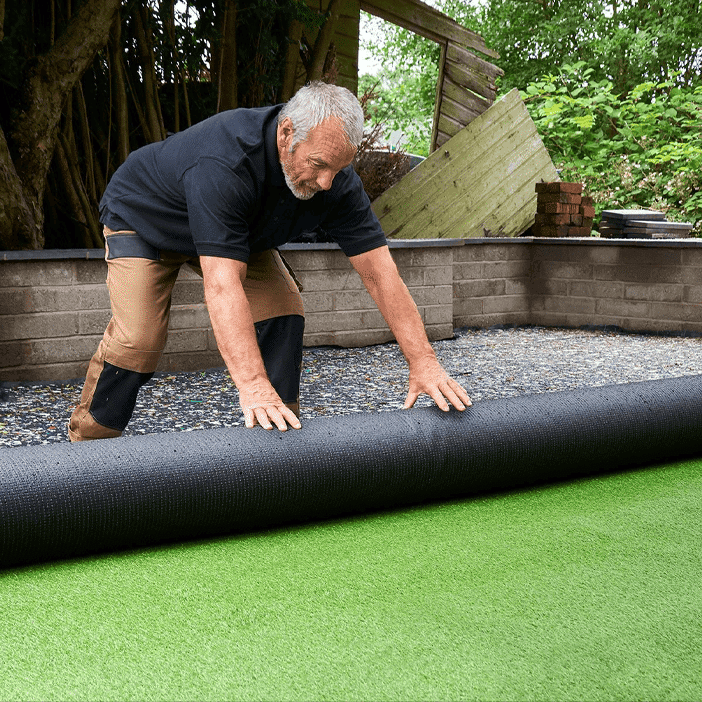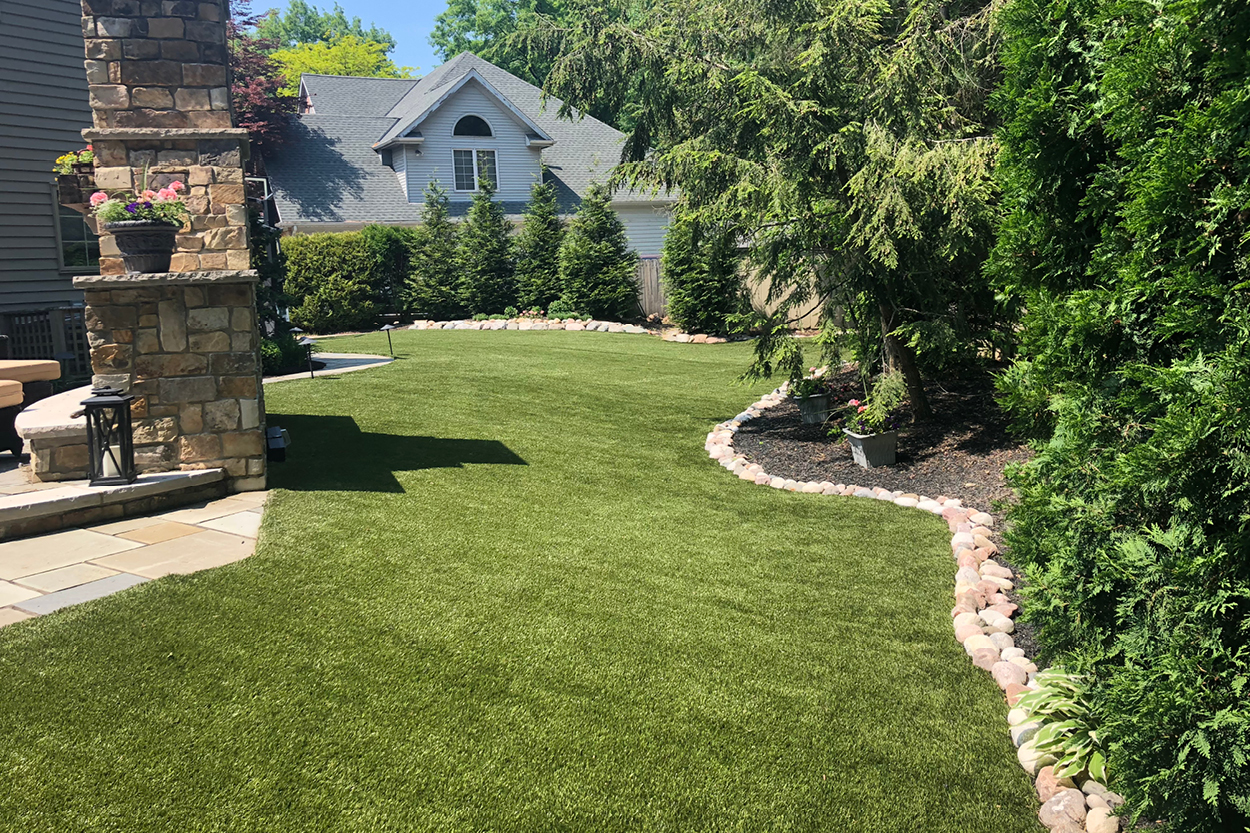Premium Arizona Turf Options for a Stunning and Lush Landscape
Premium Arizona Turf Options for a Stunning and Lush Landscape
Blog Article
Delve Into the Environmental Benefits of Opting for Synthetic Grass Solutions
The adoption of fabricated grass services provides a compelling chance to attend to pushing ecological obstacles. By considerably decreasing water usage and minimizing the application of hazardous chemicals, these choices not only promote sustainable landscaping but additionally shield regional ecosystems.
Water Preservation Benefits
Among one of the most considerable advantages of synthetic grass is its ability to conserve water. Traditional lawn yards need significant irrigation, especially in areas vulnerable to drought or water restrictions. In comparison, man-made grass does not require watering, considerably reducing the general demand for water sources. This feature is particularly helpful in dry regions where water deficiency is a pressing worry.
By removing the demand for regular watering, synthetic grass contributes to lasting landscape methods and aids alleviate the environmental impact of too much water consumption. In addition, the preservation of water prolongs to the decrease of overflow, which can result in soil erosion and waterway pollution.
In addition, the setup of fabricated turf allows towns and house owners to designate water resources much more efficiently, concentrating on vital usages such as drinking water and agriculture. The shift towards synthetic lawn not only promotes responsible water use however likewise aligns with wider ecological objectives targeted at maintaining natural deposits.
As communities increasingly focus on sustainability, the water conservation advantages of synthetic grass present an engaging instance for its adoption in property and industrial landscaping jobs.
Minimized Chemical Use
The shift to synthetic grass considerably lowers the dependence on chemical treatments generally used in natural lawn maintenance. Standard lawn monitoring typically involves the application of plant foods, chemicals, and herbicides to advertise growth and control bugs. These chemicals can pose threats to human health, local wildlife, and the atmosphere, contributing to soil and water contamination.
On the other hand, synthetic lawn gets rid of the demand for these hazardous compounds. When mounted, it requires minimal upkeep, largely including regular cleaning and irregular infill replenishment. This reduction in chemical use not just benefits the prompt atmosphere however also adds to more comprehensive ecological security. By minimizing the launch of artificial compounds into the ecological community, synthetic grass advertises much healthier dirt and water supply.
Additionally, the absence of chemical drainage connected with synthetic lawn installations helps shield neighborhood waterways from pollution, supporting marine life and preserving biodiversity. Turf installation phoenix az. As neighborhoods significantly prioritize lasting practices, going with artificial lawn presents a sensible remedy that lines up with environmental preservation objectives. With this change, residential property owners can appreciate rich green spaces without jeopardizing eco-friendly health and wellness, leading the way for an extra lasting future
Reduced Carbon Impact

In addition, the setup of synthetic grass can cause substantial water conservation. All-natural lawns require considerable amounts of water for watering, which not just includes in the carbon impact related use this link to water extraction and treatment but also pressures neighborhood water resources. On the other hand, synthetic grass requires marginal maintenance, needing no watering, consequently dramatically minimizing water use and its linked energy costs.
Furthermore, the durability of synthetic grass adds to its lower carbon influence. With a life expectancy of approximately 15 years or more, the requirement for regular replacements is reduced, leading to less waste and reduced energy consumption in manufacturing and dealing with conventional grass options. Overall, synthetic grass offers a lasting alternative for ecologically conscious landscape design.
Environment Conservation
Habitat conservation is a crucial consideration in the dispute over landscape design options, specifically when comparing synthetic grass to all-natural lawn. All-natural grass yards commonly call for substantial upkeep, consisting of using herbicides, plant foods, and chemicals, which can adversely affect regional ecological communities. These chemicals can leach into the dirt and waterways, harming native flora and animals and disrupting regional environments.
On the other hand, man-made turf offers a possibility to minimize the ecological footprint of landscaping. By choosing artificial lawn, home owners can decrease the disturbance of natural environments linked with standard yard treatment practices. Synthetic grass removes the demand for dangerous chemicals, thus protecting close-by wildlife and keeping the stability of bordering discover this ecosystems. The setup of synthetic lawn can lead to the conversion of former yard locations right into even more biodiverse landscapes, such as pollinator yards or native plant locations, which can support neighborhood wildlife.
Ultimately, the change to artificial lawn not only saves water and reduces upkeep initiatives but additionally fosters an extra unified connection between human activities and the natural atmosphere, promoting environment preservation while doing so.
Long-Term Sustainability
Long-term sustainability is a critical consider reviewing the benefits of synthetic grass over conventional yard yards. Among one of the most considerable advantages of synthetic grass is its resilience; it can last approximately 15-20 years with very little upkeep, whereas all-natural yard needs look at here regular reseeding and replacement. This longevity decreases the requirement for consistent sources, such as water, fertilizers, and chemicals, which are vital for keeping a healthy and balanced yard lawn.
Furthermore, synthetic grass contributes to a reduction in carbon exhausts connected with lawn treatment devices. Traditional grass commonly require gas-powered lawn mowers, trimmers, and blowers, all of which add to air pollution. Phoenix turf companies. On the other hand, synthetic grass eliminates the demand for such tools, promoting a cleaner setting
Additionally, the manufacturing of synthetic grass increasingly utilizes recycled materials, improving its sustainability profile. As producers adopt green techniques, the environmental footprint of synthetic lawn proceeds to reduce.

Conclusion
The adoption of synthetic grass solutions presents significant ecological benefits, including significant water preservation, reduced dependence on hazardous chemicals, and a reduced carbon footprint. Man-made turf aids in preserving all-natural environments by decreasing land disruption and promoting lasting sustainability with the use of long lasting materials. Jointly, these factors emphasize the capacity of synthetic grass to add positively to environmental health and supply a practical alternative to conventional landscaping techniques in a significantly resource-conscious world.
In comparison, fabricated turf does not need watering, significantly reducing the general need for water resources. By lessening the launch of artificial substances right into the ecological community, fabricated grass promotes healthier soil and water systems.
Moreover, the installment of artificial grass can result in considerable water conservation. In comparison, man-made turf requires marginal upkeep, requiring no watering, thereby dramatically decreasing water usage and its linked energy costs.

Report this page